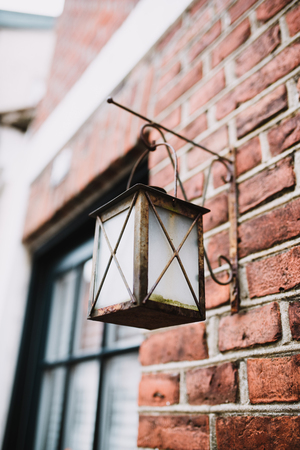Introduction to Outdoor Lighting Regulations in the UK
When considering outdoor lighting installations for your property in the UK, understanding local laws and planning permission requirements is essential. The UKs regulatory landscape is designed to ensure that exterior lighting not only enhances property aesthetics and security but also minimises adverse effects on neighbours, wildlife, and the broader environment. Ignoring these rules can lead to costly enforcement action, legal disputes, or even mandatory removal of unauthorised installations. Moreover, compliance with regulations plays a crucial role in safeguarding your investment—well-planned and lawful outdoor lighting can boost your propertys value and appeal to future buyers. Conversely, non-compliance may devalue your asset or complicate future sales. As such, being proactive about understanding and adhering to UK planning policies is not just a legal obligation; it’s a strategic move for anyone looking to protect and grow their property investment.
2. Key Planning Permission Requirements
Understanding when planning permission is required for outdoor lighting installations in the UK is essential to avoid costly delays or legal complications. The need for planning permission often depends on the type of property, the intended use of the lighting, and the potential impact on neighbours and the surrounding environment. Below, we break down the key considerations for residential, commercial, and listed properties.
Residential Properties
For most domestic homes, installing basic outdoor lighting such as garden or pathway lights does not usually require planning permission if it’s for personal use, remains within reasonable brightness levels, and does not cause nuisance glare to neighbouring properties or highways. However, more substantial installations—such as floodlights, security lighting exceeding standard brightness, or large-scale decorative features—may require approval from your local planning authority (LPA), especially if located in conservation areas or affecting protected trees.
Commercial Properties
Outdoor lighting for commercial premises is subject to stricter scrutiny due to potential impacts on public spaces and neighbouring businesses. Planning permission is typically required for:
- Illuminated signage
- Car park lighting
- Security lighting visible from public highways
- Lighting that could affect nearby residential amenity or wildlife habitats
Your LPA will assess factors such as light spill, hours of operation, and compliance with British Standards for exterior lighting (e.g., BS 5489).
Listed Buildings and Conservation Areas
If your property is listed or situated within a conservation area, additional restrictions apply. Any alterations that affect the character or appearance of a listed building, including external lighting installations, will almost always require both listed building consent and planning permission. In conservation areas, permissions may be needed even for modest changes to preserve local heritage value.
Summary Table: When Is Planning Permission Required?
| Property Type | Typical Outdoor Lighting | Planning Permission Needed? | Notes |
|---|---|---|---|
| Residential | Garden/pathway lights Standard security lights |
No (unless causing nuisance/bright) | Check with LPA if in conservation area or using high-powered lights |
| Commercial | Signage Car park/security/facade lighting |
Usually Yes | LPA assesses environmental & amenity impact; adhere to BS standards |
| Listed/Conservation Area | Any external lighting installation | Yes (Listed building consent + planning permission) | Stringent controls to protect heritage assets and local character |
Key Takeaway for Investors and Property Owners:
Navigating UK planning rules for outdoor lighting requires careful consideration of property type, location, and potential community impact. Always consult your local planning authority early in the project to ensure compliance and avoid unnecessary setbacks.

3. Relevant UK Legislation and Standards
When planning and installing outdoor lighting in the UK, it is crucial to understand the core regulations and standards that govern these activities. The most significant pieces of legislation include The Clean Neighbourhoods and Environment Act 2005 and the British Standard BS EN 12464. These frameworks are designed to ensure that lighting installations contribute positively to public spaces while mitigating negative impacts such as light pollution and nuisance.
The Clean Neighbourhoods and Environment Act 2005
This Act gives local authorities the power to control light pollution, particularly where artificial lighting becomes a statutory nuisance. Homeowners and businesses must be mindful of how their external lighting might affect neighbours or the surrounding environment. Under this law, poorly designed or excessively bright outdoor lighting can lead to enforcement action, fines, or required alterations. Key implications for investors and property owners include the need to assess the direction, brightness, and hours of operation for any new lighting installation.
British Standard BS EN 12464
BS EN 12464 is the main standard relating to the lighting of workplaces, including outdoor areas such as car parks, pathways, and building exteriors. It sets out specific requirements for illumination levels, uniformity, glare limitation, and energy efficiency. Adhering to this standard not only ensures compliance but also enhances safety, security, and visual comfort in outdoor environments. For commercial projects or large residential developments, following BS EN 12464 is often expected by planning authorities and insurers alike.
Implications for Outdoor Lighting Installations
Together, these regulations demand a careful approach to design and implementation. Investors should prioritise products with adjustable luminance and shielding features, while developers must integrate professional lighting assessments into their planning process. Meeting both legal requirements and best-practice standards can reduce risk, safeguard community relations, and add long-term value to your property portfolio.
4. Light Pollution and Environmental Considerations
Light pollution is a growing concern across the UK, particularly in densely populated areas and regions close to sensitive natural habitats. As a result, UK regulations regarding outdoor lighting installations are designed not only to enhance safety and security but also to minimise unnecessary light spill and its impact on the environment. The planning authorities place significant emphasis on ensuring that new lighting projects do not adversely affect local wildlife, especially nocturnal species whose behavioural patterns can be disrupted by excessive artificial illumination.
Property owners have a legal and ethical responsibility to comply with these regulations, which are underpinned by several key pieces of legislation including the Clean Neighbourhoods and Environment Act 2005 and specific guidance from local councils. This means that when planning an outdoor lighting installation, it is essential to consider both the intensity and direction of light, as well as the potential for glare or sky glow affecting neighbouring properties and protected landscapes.
Key Areas of Regulatory Focus
| Regulatory Focus | Description |
|---|---|
| Minimising Light Spill | Ensure fittings direct light downwards and use shields to avoid intrusion into adjacent areas or properties. |
| Wildlife Protection | Avoid bright lights near habitats such as rivers, woodlands, or nature reserves to reduce disruption to bats, birds, and insects. |
| Timing Controls | Install timers or motion sensors so lights are only on when needed, reducing overall emission. |
Responsibilities for Property Owners
- Conduct an environmental impact assessment if required by local planning authority.
- Select fixtures certified for low light pollution.
- Regularly maintain installations to ensure compliance with approved plans and operational efficiency.
Market Implications for Investors
Understanding these environmental considerations is crucial for investors targeting property developments or commercial premises in the UK. Non-compliance can lead to costly enforcement actions, reputational damage, and delays in project timelines. Conversely, implementing sustainable lighting solutions not only aligns with regulatory expectations but also enhances property value and appeal among environmentally conscious tenants and buyers.
5. Installation Best Practices and Compliance Tips
When undertaking outdoor lighting installations in the UK, adhering to best practices is essential to ensure both regulatory compliance and harmonious neighbour relations. To begin with, strategic placement of lighting fixtures is crucial; lights should be directed downward or shielded to minimise light spill onto adjacent properties and public spaces. This not only helps prevent light pollution, as outlined by the Institution of Lighting Professionals (ILP) guidelines, but also aligns with the requirements set out in planning permission frameworks.
Another key consideration is timing. Installing timers or motion sensors can significantly reduce unnecessary illumination during late-night hours, demonstrating a proactive approach to energy efficiency and community respect. UK councils often recommend limiting the hours outdoor lights are operational, especially in residential zones, to avoid disturbance.
In terms of brightness, it’s advisable to use luminaires with appropriate wattage and colour temperature. The recommended maximum for residential areas is typically 500 lumens for pathway or garden lighting, avoiding harsh white or blue-toned LEDs that can exacerbate glare and disrupt local wildlife. Always check if your local authority has stricter guidelines on luminous intensity or fixture types.
Perhaps most importantly, always take neighbour considerations into account. Consulting with those living nearby before installation can preempt complaints and foster goodwill. Ensure that no direct light shines into neighbouring windows or gardens—shielding fixtures or using lower mounting heights can help achieve this balance.
Regularly inspect and maintain your outdoor lighting setup to ensure ongoing compliance. Should you plan substantial changes, revisit local council guidelines or seek professional advice to remain within legal boundaries. By following these practical tips, you’ll not only meet UK regulations but also create an outdoor environment that is safe, efficient, and considerate of your community.
6. Application Process and Local Authority Engagement
Securing planning permission for outdoor lighting installations in the UK involves a clear, step-by-step process that ensures both legal compliance and alignment with local community standards. Understanding each stage of this journey is crucial for a smooth approval and successful implementation.
Step 1: Preliminary Research and Assessment
Begin by reviewing your local authority’s planning guidelines regarding outdoor lighting. Each council may have specific stipulations based on location, conservation area status, or environmental considerations. It’s wise to assess whether your proposed installation could impact neighbours, wildlife, or public spaces.
Step 2: Preparing Your Planning Application
Compile detailed plans outlining the location, type, intensity, and purpose of the outdoor lighting. Supporting documents typically include site maps, technical specifications, light spill diagrams, and a statement addressing potential impacts on the surrounding area. Photographs or visual mock-ups can further strengthen your application.
Step 3: Submission to Local Council
Submit your completed application through your local council’s planning portal or via post. Pay close attention to the required fees and make sure all supporting documentation is included. Incomplete applications can delay the process significantly.
Liaising With the Planning Department
After submission, maintain open communication with the planning officer assigned to your case. They may request additional information or clarifications. Prompt responses help keep your application moving forward and demonstrate your commitment to compliance.
Public Consultation Period
Most applications undergo a public consultation phase where neighbours and relevant stakeholders can provide feedback. Be prepared to address any concerns raised during this period; constructive engagement can help resolve objections early in the process.
Step 4: Awaiting Approval or Further Action
The council will review all submitted materials and feedback before making a decision. If approved, you’ll receive formal notice with any conditions attached. If refused, you have the right to appeal or amend your proposal based on the feedback received.
Key Documentation Checklist
– Detailed site plan – Lighting specifications – Impact assessment statement – Consultation responses (if applicable) – Proof of neighbour notification (where required)
Proactive engagement with your local authority not only streamlines the planning process but also positions your investment favourably within the community—supporting long-term value and regulatory peace of mind.
7. Potential Investment Impact and Market Trends
Compliant outdoor lighting has become a significant consideration for property owners, investors, and developers across the UK. By adhering to local regulations and securing the necessary planning permissions, property stakeholders not only mitigate legal risks but also enhance the overall desirability of their assets. Modern tenants increasingly value well-lit, secure environments—particularly in urban and suburban settings—making properties with thoughtfully installed and compliant outdoor lighting more attractive in a competitive market.
The drive towards sustainable solutions is another defining trend within the UK property sector. Energy-efficient LED installations, smart lighting systems, and eco-friendly designs are now highly sought after, aligning with both regulatory requirements and broader societal expectations. Investors who incorporate these features can often command higher rental yields and benefit from reduced operational costs over time. Furthermore, as the government continues to tighten regulations around light pollution and energy consumption, future-proofing properties with compliant lighting ensures ongoing market relevance and reduces the risk of costly retrofits.
In summary, investing in outdoor lighting that meets UK standards does more than tick a compliance box—it actively enhances tenant satisfaction, supports sustainability goals, and positions properties favourably amid shifting market dynamics. As demand grows for safe, energy-conscious living environments, those who prioritise compliant outdoor lighting are poised to reap both immediate and long-term returns on their investment.


